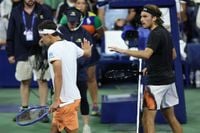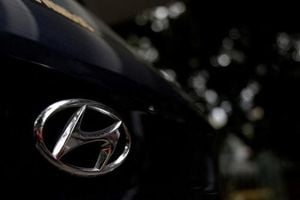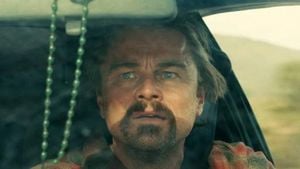Stefanos Tsitsipas arrived at the US Open 2025 with a heavy sense of déjà vu and a mountain of pressure on his shoulders. The Greek star, once ranked as high as World No. 3 and a two-time Grand Slam finalist, was desperate to turn his season around after a string of disappointing results. But as the dust settled on August 29, it was Daniel Altmaier, the unheralded German, who emerged victorious from a bruising five-set epic, sending Tsitsipas packing in the second round and adding yet another chapter to the Greek’s turbulent year.
Tsitsipas’ 7-6(5), 1-6, 4-6, 6-3, 7-5 loss to Altmaier was a marathon battle, stretching over four hours and twenty-one minutes on the hard courts of New York. The match had everything: dramatic swings in momentum, physical and mental endurance, and even a simmering on-court controversy that spilled over into a tense post-match exchange. For Tsitsipas, it was more than just another defeat—it was a microcosm of his 2025 woes.
Coming into the US Open, Tsitsipas hadn’t strung together back-to-back victories since the Barcelona Open in April. His confidence was shaky, his form erratic, and his body—especially his troublesome back—wasn’t cooperating. In the three tournaments leading up to New York, he managed just one win. The US Open has never been his happiest hunting ground, but this year, expectations were modest at best. After dispatching Alexandre Muller in the opening round, Tsitsipas seemed poised to finally get some traction. Instead, he ran into Altmaier, who was playing inspired tennis and had nothing to lose.
The contest itself was a rollercoaster. Tsitsipas grabbed the second and third sets after dropping a tight opener, but Altmaier roared back in the fourth. The decisive set was a nerve-jangling affair, with Tsitsipas even holding a match point late on. Yet, as has happened all too often this season, he couldn’t close the deal. Altmaier, ranked No. 56 in the world, held his nerve to clinch the match 7-5 in the fifth, collapsing to the court in disbelief and joy. For the German, it was a breakthrough—his first time reaching the third round at the US Open, where he’ll next face Australian eighth seed Alex de Minaur.
But the match will be remembered as much for its drama as for its tennis. Tempers flared in the closing stages, culminating in a frosty handshake at the net. Tsitsipas, frustrated by Altmaier’s repeated use of the underarm serve—a tactic that’s become increasingly popular but remains divisive—confronted his opponent. “Next time don’t wonder why I hit you, ok?” Tsitsipas snapped, referencing a point earlier in the match where he’d fired a forehand at Altmaier’s body as the German approached the net. Tsitsipas, hands raised in a half-hearted apology, wasn’t done. “I’m just saying if you serve underarm... if you serve underarm.” Altmaier, for his part, simply shook his head and walked away, refusing to be drawn into a war of words.
As if the loss wasn’t enough, Tsitsipas’s US Open campaign was further soured by a $5,000 fine for a coaching violation. While on-court coaching is now permitted at Grand Slams, the rules stipulate that communication is only allowed when the player and coach are on the same side of the court. Tsitsipas fell foul of this technicality, adding a financial penalty to his mounting frustrations. The fine, while not crippling for a player of his stature, was symbolic—a reminder of the season’s many missteps and moments of ill-discipline.
Behind the scenes, the Greek’s coaching carousel has been almost as tumultuous as his on-court fortunes. After a brief and ultimately unsuccessful stint with Goran Ivanisevic—himself a Wimbledon champion and renowned for his fiery personality—Tsitsipas returned to the familiar embrace of his father, Apostolos Tsitsipas, just before the US Open. The decision came after a public spat between Ivanisevic and the Tsitsipas camp. Following Stefanos’s first-round exit at Wimbledon to Valentin Royer, Ivanisevic didn’t mince words. “He wasn’t mentally or physically prepared at Wimbledon. Back problems, a million problems. I am three times fitter,” Ivanisevic said, as quoted by Tennis365. The Croatian’s blunt assessment, pointing to his own fitness at age 53 compared to Tsitsipas’s struggles at 27, didn’t sit well with Apostolos.
In a pre-US Open interview with Clay Tenis and RG Media, Apostolos fired back. “I didn’t like that he expressed his opinions publicly,” he admitted. “Probably Goran saw something he didn’t like. He should have identified it at the beginning of their professional relationship with Stefanos and discussed it personally with Stefanos and his team and tell him what he wants from him. Goran is a professional, I’m sure he has his own ideas, how to make things working, but definitely he should have done it personally with Stefanos. It’s interesting for the public to know about all these things, but the most important for the people is to see Stefanos playing good tennis. And the responsible about that are the members of his team. We are teachers. Coaches must create the right environment for the player to develop.”
Yet, for all the off-court drama and parental support, the numbers paint a stark picture. With the loss to Altmaier, Tsitsipas has now lost seven of his last ten matches and failed to progress past the second round at any Grand Slam in 2025. His only two wins at majors this year are a far cry from the form that once saw him contest Grand Slam finals and threaten the sport’s established elite. The coaching change, the public disputes, and even the return of his father haven’t yet yielded the turnaround he so desperately needs.
As Tsitsipas departs New York, his season teeters on the brink. Injuries, coaching upheaval, and a crisis of confidence have all played their part. There’s still time left in 2025, and with his father back in his corner, he’ll hope to rebuild from the rubble of this US Open disappointment. But questions abound: Can Tsitsipas rediscover the mental and physical edge that once made him a feared competitor? Will the father-son partnership succeed where others have faltered? And how will he respond to the growing scrutiny, both from the media and within his own camp?
For now, Daniel Altmaier marches on, his own story just beginning to unfold. As for Stefanos Tsitsipas, the search for answers—and redemption—continues. Tennis fans will be watching closely as he looks to salvage what’s left of a season that, so far, has been defined by frustration and unfulfilled promise.




